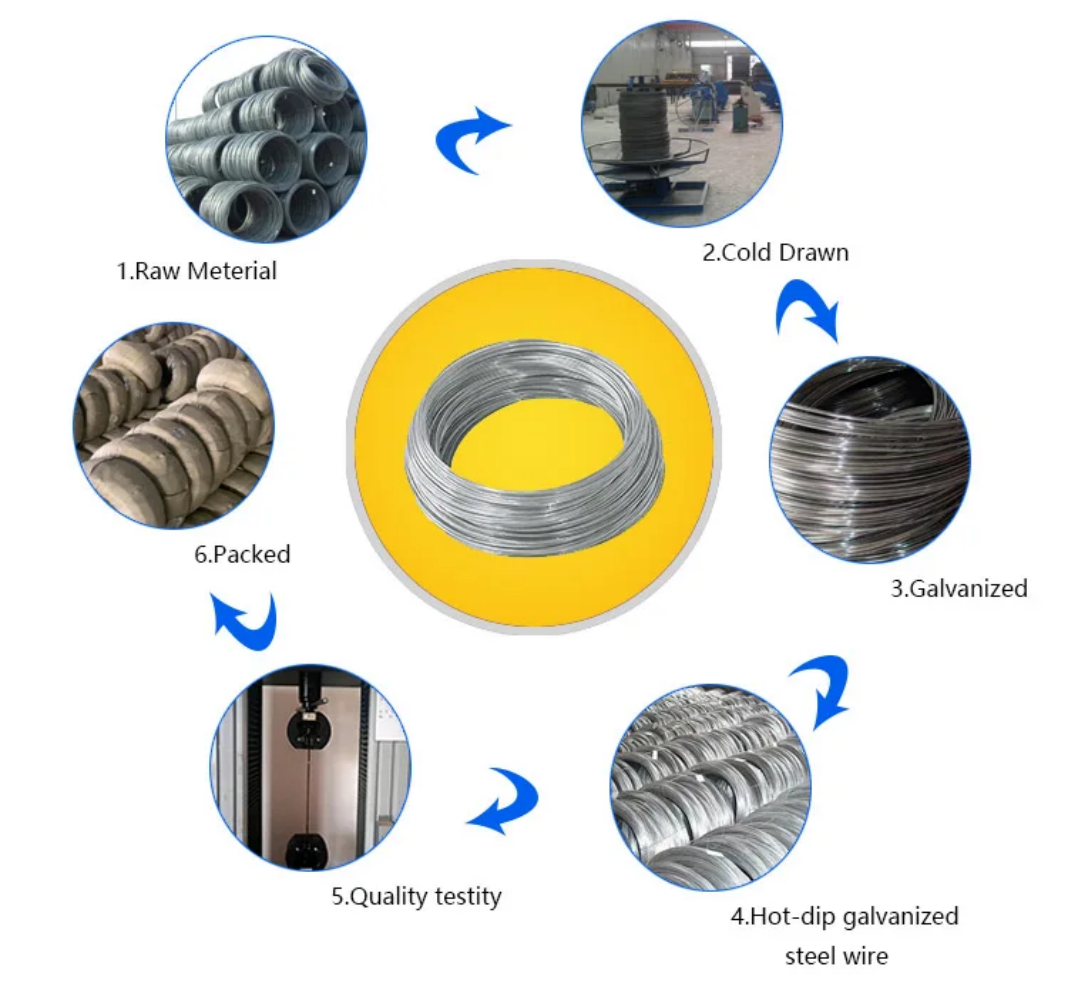gi wire
Understanding GI Wire A Versatile Material in Modern Applications
GI wire, short for Galvanized Iron Wire, is a popular material known for its strength, durability, and resistance to corrosion. This wire is extensively utilized across various industries, ranging from agriculture and construction to crafting and manufacturing. Its versatility and wide range of applications have made GI wire an essential component in many everyday products and industrial processes.
What is GI Wire?
GI wire is made from iron wire that has been coated with a layer of zinc through a process known as galvanization. This coating provides a barrier against corrosive elements, making the wire highly resistant to rust and degradation. The galvanized layer not only enhances the durability of the iron wire but also extends its lifespan, making it an economical choice for both industrial and domestic use.
The thickness of the zinc coating and the diameter of the wire can vary, allowing manufacturers to produce GI wire suitable for different applications. Typically, GI wire comes in various strengths, ranging from soft, pliable wire used in crafts to rigid wire suitable for heavy-duty applications.
Applications of GI Wire
1. Construction and Fencing One of the most common uses of GI wire is in the construction industry. It is often used for reinforcing concrete and as a binding agent in various structural applications. Additionally, GI wire is a popular choice for fencing, as it creates strong, durable barriers that can withstand environmental stresses.
2. Agriculture In agriculture, GI wire is employed in a variety of ways. It is used for trellising plants, constructing animal enclosures, and supporting vines or crops. Its resistance to corrosion means it can endure harsh weather conditions, making it ideal for long-term agricultural projects.
gi wire

3. Crafting and DIY Projects The versatility of GI wire makes it a favorite among hobbyists and artisans. It can be easily bent, twisted, and cut to create a wide range of products, from simple jewelry to intricate sculptures. Its availability in various thicknesses allows crafters to select the right type for their specific projects, whether they require strength or flexibility.
4. Industrial Uses In industrial settings, GI wire is often used in the production of wires and cables, as well as in the automotive and aerospace industries. The wire’s durability and resistance to elements make it suitable for manufacturing components that must withstand significant wear and tear.
5. Electroplating and Coating GI wire is also utilized in the electroplating process, where it is coated with other metals to enhance aesthetic appeal and resistance to damage. This is particularly common in decorative applications where both durability and appearance are important.
Benefits of Using GI Wire
The advantages of using GI wire are manifold. First and foremost, its corrosion resistance significantly increases the longevity of products made from it. This not only reduces the need for frequent replacements but also contributes to lower maintenance costs over time. Additionally, the affordability of GI wire makes it an attractive option for various applications, allowing users to achieve high-quality results without overshooting their budgets.
Moreover, the strength of GI wire allows it to bear heavy loads, making it suitable for both light and heavy-duty applications. This makes GI wire a reliable choice in fields that require materials capable of withstanding substantial physical stress.
Conclusion
GI wire stands as a testament to the power of innovation in materials engineering. Its unique properties, derived from the galvanization process, unlock a multitude of applications across diverse fields. Whether in agriculture, construction, crafting, or industrial uses, GI wire proves to be an invaluable resource that combines cost-effectiveness with unparalleled durability. As industries continue to evolve, GI wire will undoubtedly maintain its relevance, adapting to new challenges and opportunities. It is a prime example of how a simple material can have a profound impact across various sectors, underscoring its importance in modern-day applications.
-
Space-Saving Chain Fence Hacks Vertical Gardening with Cyclone MeshNewsJul.16,2025
-
Innovations in Iron Nail Wire Production for Modern ConstructionNewsJul.16,2025
-
Creative Uses of Wire Netting Fence in Modern Landscape DesignNewsJul.16,2025
-
Barbed Wire Fence Innovations in Anti-Climb TechnologyNewsJul.16,2025
-
Architectural Uses of Umbrella Nails for Aesthetic Roof DesignsNewsJul.16,2025
-
Architectural Uses of Razor Barbed Wire in Secure Urban DesignNewsJul.16,2025




